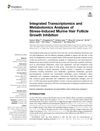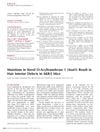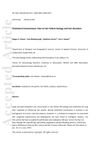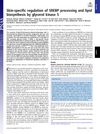Search
forLearn
5 / 65 resultslearn Ketoconazole
antifungal with some anti-androgenic benefits, often used as a shampoo
learn sh-Polypeptide-7
learn Exosomes
Microscopic delivery system that sends growth-promoting signals to hair follicles
learn Hair Fibers
cosmetic product that temporarily makes hair appear thicker
Research
5 / 1000+ results
research Integral Hair Lipid in Human Hair Follicle
Human hair has a protective lipid layer that can be damaged by moisture and treatments, affecting hair growth and health.

research Integrated Transcriptomics and Metabolomics Analyses of Stress-Induced Murine Hair Follicle Growth Inhibition
Chronic stress in mice changes skin metabolism and gene expression, leading to hair loss.

research Mutations in Sterol O-Acyltransferase 1 (SOAT1) Result in Hair Interior Defects in AKR/J Mice
A mutation in the Soat1 gene causes hair structure defects and other health issues in AKR/J mice.

research Cholesterol Homeostasis: Links to Hair Follicle Biology and Hair Disorders
Cholesterol balance is important for hair health, and problems with it can lead to hair loss conditions.

research Skin-Specific Regulation of SREBP Processing and Lipid Biosynthesis by Glycerol Kinase 5
A gene called Gk5 controls lipid production in the skin and affects hair growth.
Community Join
5 / 1000+ results
community Compressed part of research of theory of androgenic/anabolitic balance. AGA h-responders analytic. Theory of physio-metabolitic method of anti AGA treatment
The treatment for androgenetic alopecia involves using finasteride and minoxidil with intense exercise and cold exposure to boost metabolism and reduce androgenic effects, potentially leading to hair regrowth. This approach may activate biological pathways for improved hair and overall health.
community Physio-metabolic method (antiandrogen, minoxidil, leg training and cold)
The method combines finasteride, minoxidil, intense leg exercises, and cold exposure to treat androgenetic alopecia. It aims to boost metabolism and reduce androgenic effects, enhancing hair growth.
community The Worst Hair Loss Condition You (MAY) have: LPP
Lichen Planopilaris (LPP) is an autoimmune condition causing permanent hair loss and fibrosis, often misdiagnosed. Treatments include pioglitazone, topical corticosteroids, anti-inflammatory medication, and Jak inhibitors.
community Massive hair gains! Hope! May this post be a light to you in dark phases when all other lights go out
A 27-year-old man saw significant hair regrowth after starting a regimen in January that included topical minoxidil with finasteride, vitamins D and B12, fish oil, zinc with magnesium, quitting smoking, and intermittent fasting. People commented on the effectiveness of minoxidil in Southern populations and asked about the details and timeline of his treatment.
community Hair Loss & Lipids: Why you have sebderm, folliculitis, LPP, inflammation, etc...
Excess sebum rich in cholesterol and triglycerides can lead to hair loss through inflammation, with treatments like Ciclopirox shampoo, Benzoyl Peroxide shampoo, and Clindamycin gel recommended for managing conditions like seborrheic dermatitis and folliculitis. Pioglitazone is suggested for Lichen Planopilaris, while Omega-3s and reducing processed foods may improve sebum quality, though genetic factors play a significant role.